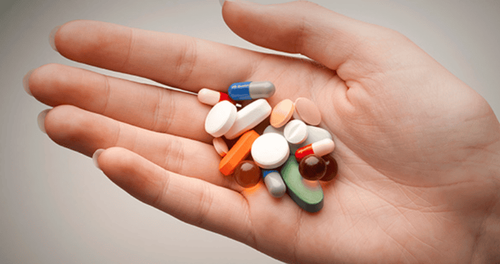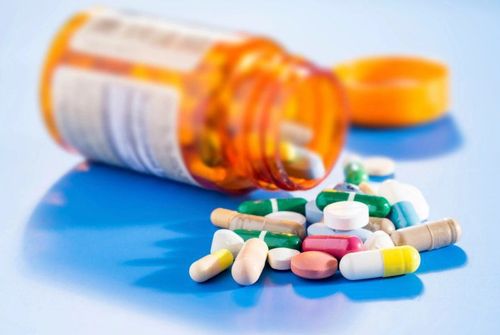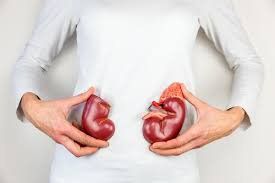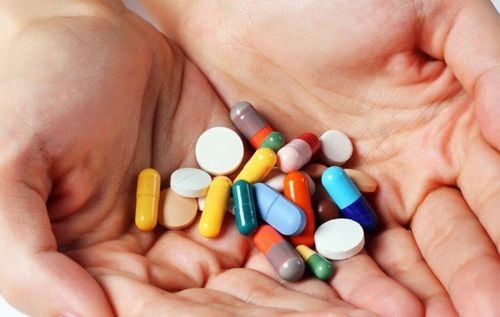This is an automatically translated article.
Bacteria resistant to antibiotics make the drug no longer effective clinically, not killing bacteria even when used in high concentrations and for a long time. Therefore, it can be considered that antibiotic resistance is a great threat because bacteria will "comfortably" roam and grow without any weapons to stop it. So how can we prevent drug-resistant bacterial infections?
1. Antibiotic resistance in Vietnam
Antibiotic resistance is the ability of microorganisms to grow and develop in the presence of a drug that would normally kill or inhibit their growth. As a result, conventional therapies are no longer effective, infections become more severe, illness lasts longer, treatment costs increase, and the risk of death is higher.
Current antibiotic resistance leads to more and more infections (pneumonia, urinary tract infections, tuberculosis,...) becoming more difficult or even impossible to treat.
It can be seen that antibiotic resistance is a huge threat to public health. Vietnam is one of the countries under increasing threat of antibiotic resistance, due to the phenomenon of inappropriate use of antibiotics from the health care system, in aquaculture, in animal husbandry. and in the habit of using drugs in the community.
In fact, up to 88 - 97% of pharmacies retail antibiotics without a doctor's prescription (although this practice is prohibited by Vietnamese law) and antibiotics account for more than 50% of the total. number of drugs for human use in Vietnam. A study conducted in hospitals in our country also showed that 1/3 of inpatients use antibiotics inappropriately during hospital treatment.
2. Drug-resistant bacteria are a huge threat
According to the European CDC report, every year more than 25,000 patients die from infections with bacteria resistant to strong antibiotics. The drug-resistant bacteria known as MRSA, ESBL-producing bacteria, etc., have markedly increased every year, in which ESBL-producing bacteria have increased 6 times in 4 years.
Recently there has been a rapid spread of Gram-negative drug-resistant bacteria carrying new antibiotic resistance genes: Gen NDM-1 - New Delhi Metallo Beta lactamase 1 was observed to be resistant to a strong class of antibiotics. the most current and the last option that we have Carbapenem group.
Common bacteria in hospitals in our country include: E.coli, Pseudomonas aeruginosa, Klebsiella, Acinetobacter baumannii, Staphylococcus aureus, etc. have a very high rate of resistance to commonly used antibiotics. . Especially with the Acinetobacter baumannii strain which is considered a leading cause of nosocomial infections with an alarming rate of antibiotic resistance, this bacterium is already resistant to most of the common antibiotics used in hospitals.
Antibiotics are considered as a solution for mankind in bacterial infections, it helps us to control many diseases. However, currently, the inappropriate use of antibiotics is rapidly leading to antibiotic-resistant bacteria.
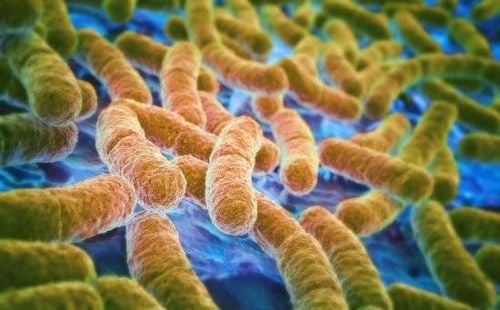
Nhiễm vi khuẩn kháng thuốc kháng sinh làm cho thuốc không còn tác dụng trên lâm sàng
3. Why are bacteria resistant to drugs?
Scientists have long embarked on the study of antibiotic resistance mechanisms of resistant bacteria. Microbes are tiny, but they have a multitude of ways to deal with man-made antibiotics, so we almost always have to follow the evolution of bacteria. In clinical practice, newly studied antibiotics, very expensive and not long after being widely used, soon appeared strains of bacteria resistant to those antibiotics.
There are many ways for antibiotic-resistant bacteria to inactivate antibiotics, but can be classified into 3 main groups of causes:
3.1. Bacteria limit the penetration of antibiotics
Bacteria limit the penetration of antibiotics into their cells, making the drug less likely to work and kill bacteria. More specifically, bacteria will strengthen their outer protective membranes (the outer membrane in gram-negative bacteria) or form pumps that act from the inside to pump the antibiotic back out if the antibiotic has penetrated. enter into bacterial cells (with drug resistance of blue pus bacilli, Acinetobacter sp...). Currently, most gram-negative bacteria living in the colon have this mechanism to resist beta-lactam antibiotics.
3.2. Bacteria produce enzymes to break down antibiotics
Common in Staphylococcus aureus and other intestinal bacteria. Staphylococcus aureus can synthesize ß-lactamase enzymes that destroy the lactam ring of ß-lactam antibiotics, while intestinal bacteria (E.coli, Klebsiella sp...) can produce ß-lactamase enzymes. broad-spectrum (ESBL), can be resistant to most ß-lactam antibiotics except some new antibiotics such as imipenem, meronem,...
Especially recently, the group of bacteria with NDM- super-resistant can resistant to all common antibiotics including the two new antibiotics mentioned above. In this group of bacteria that produce resistant enzymes, when the antibiotics are strong enough, they can pass through the outer membrane of the bacteria and penetrate inside, they will be subjected to chemicals (enzymes) produced by the bacteria. destroy the effect of antibiotics.
3.3. Bacteria cover or alter the sites of action of antibiotics
Due to genetic mutations on chromosomes or plasmids in bacterial cells, bacteria will alter the sites of action of antibiotics. For beta-lactam antibiotics, to kill bacteria, the antibiotic must be able to bind to the PBPs (penicillin-binding proteins), reducing the drug's affinity for the PBP-binding sites will destroy This mechanism is common with gram-positive cocci (Staphylococcus aureus, Streptococcus pneumoniae) but rarely in gram-negative bacteria.
Similarly, a mutation in the gene that changes the binding site of the antibiotic in the ribosomal subunit inside the bacterial cell can reduce the activity of macrolides, clindamycin, aminoglycosides, etc., making antibiotics ineffective. enough to inhibit protein synthesis and bacterial growth. Meanwhile, mutations in the gene encoding DNA-gyrase will cause resistance to quinolones because DNA-gyrase is essential for the promotion of quinolones' activity.
It can be seen that bacteria use all kinds of weapons such as chemical weapons, biological weapons, and even physics to fight the effects of antibiotics that man-made.
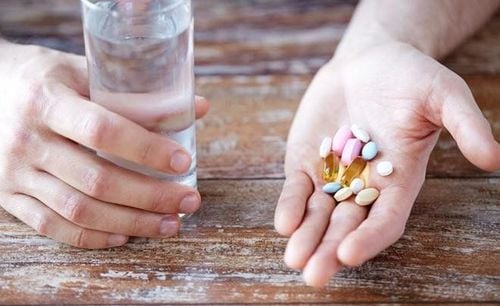
Vi khuẩn kháng thuốc ngày càng gia tăng do việc sử dụng kháng sinh bừa bãi
4. How to limit infection with resistant bacteria?
Antibiotic-resistant bacterial infections are increasing due to indiscriminate use of antibiotics, any disease (fever, headache, cough, runny nose...) patients voluntarily use antibiotics even though they have not been identified. Is the cause of the disease caused by bacteria? Over time, it will create conditions for bacteria to get used to antibiotics and develop resistance to antibiotics. In addition, contact between infected people can lead to resistance to antibiotics they have never used themselves, a phenomenon called cross-resistance.
Use antibiotics only when an infection is certain or use antibiotics for prophylactic purposes (in some cases with certainty) but at this time only use prophylactic at a minimal dose.
In order to limit the increase in antibiotic-resistant bacteria infections like today, people need to form a sense of using drugs under the guidance of doctors, not arbitrarily taking drugs or buying drugs to use as advised. other people. Only use antibiotics when it is determined that it is an infection based on the doctor's treatment experience, tests, antibiotic chart,...
Choosing the right antibiotic is also a problem that needs to be eliminated. Attention, if chosen incorrectly, the drug will not be effective.
People infected with bacteria resistant to antibiotics, the use of drugs should pay attention to special subjects such as the elderly, patients with liver failure, kidney failure, ... to calculate the dose carefully.
Use antibiotics at the right dose, at the right time - for the right time, depending on the type of disease, the time to take antibiotics will be different, but usually, antibiotics should not be used for less than 5 days even though the symptoms of the disease have shown signs of improvement or improvement. sure.
Not prolonging use for too long will give bacteria the opportunity to learn more about antibiotics and form stronger mutations. Not using enough days makes bacteria capable of reviving because it has not been completely destroyed, bacteria will accumulate more experience to change and adapt to antibiotics, leading to drug-resistant bacterial infections.
Please dial HOTLINE for more information or register for an appointment HERE. Download MyVinmec app to make appointments faster and to manage your bookings easily.




